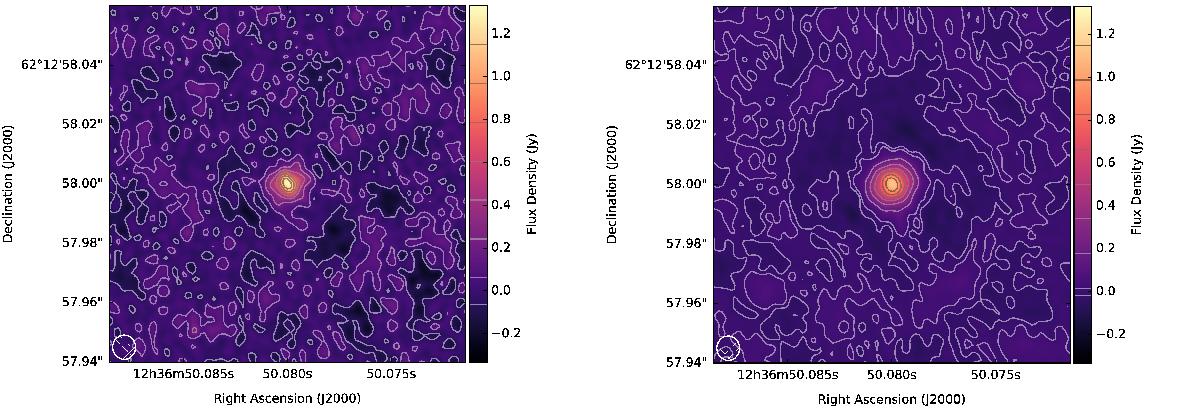Fig. 1

Left panel: J123646+621405 when divided by the CLEAN model of the source. The low signal to noise results in an imperfect CLEAN model. This creates deviations from a normalised point source and, as a result, the peak brightness is ~1.4 Jy/beam. Because the model cannot fully characterise the source structure, some of the flux density will be scattered into the side lobes. This results in a slightly reduced S/N of 7.7 compared to 7.9 before dividing the CLEAN model. Right panel: deconvolved image of 9 different, combined target sources, including the source in the left panel. Each source has been divided by its CLEAN model and combined to create a point source with a higher signal to noise. The deviations from a perfect, normalised point source have reduced and the peak brightness is ~1.1 Jy/beam. This is the source used to self-calibrate the HDF-N data set in MSSC. The source morphology is more representative of a point source and the S/N has vastly increased to 93.1 which allows self-calibration to be performed.
Current usage metrics show cumulative count of Article Views (full-text article views including HTML views, PDF and ePub downloads, according to the available data) and Abstracts Views on Vision4Press platform.
Data correspond to usage on the plateform after 2015. The current usage metrics is available 48-96 hours after online publication and is updated daily on week days.
Initial download of the metrics may take a while.




